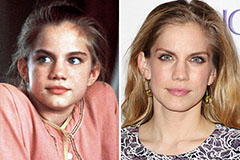What Are the current Fads in Interior Decoration That Can Elevate Your Home?
In the ever-evolving world of interior layout, a convergence of sustainability, performance, and personalization is shaping contemporary areas (Interior designer Miami). Discovering these trends exposes how they can change your home into a reflection of both individual taste and sensible requirements, inviting a better evaluation of what really boosts a living space.
Sustainable Style Practices
Lasting design techniques have become a keystone of modern interior decoration, showing a growing recognition of environmental effect. These practices focus on using environmentally friendly products, energy-efficient systems, and waste decrease strategies, aiming to create interiors that are not only cosmetically pleasing yet additionally ecologically accountable.
One trick element of lasting style is the choice of materials. Developers progressively prefer redeemed timber, recycled steels, and low-VOC (unstable organic compounds) paints, which reduce dangerous exhausts and advertise healthier indoor air quality. The unification of all-natural light with tactical home window placements decreases dependence on synthetic lights, consequently preserving power.
One more essential element is the execution of efficient heating, air conditioning, and water supply. Utilizing clever modern technology can maximize power usage, while rain harvesting systems add to sustainable water monitoring. In addition, furniture and decor are regularly sourced from regional craftsmens, additionally minimizing the carbon impact related to transportation.
Eventually, sustainable design practices not only boost the functionality and long life of areas however likewise cultivate a deeper connection to the atmosphere (Interior architecture Miami). As consumers come to be increasingly diligent, these techniques will likely remain to form the future of interior style, developing rooms that reverberate with both beauty and sustainability
Strong Shade Palettes
Strong color schemes have ended up being a specifying trend in indoor style, permitting spaces to make striking statements and show individual design. Using vivid tones can transform an or else common area right into an exciting environment. Designers are progressively welcoming abundant jewel tones, saturated primaries, and unforeseen shade mixes to develop a sense of dramatization and vibrancy.
Integrating strong shades can be attained via different components, including walls, furniture, and accessories. For example, an accent wall surface painted in a deep emerald green or a striking cobalt blue can work as a centerpiece, while vibrant furniture or artwork can infuse energy into the area. Layering different shades within the exact same shade family members includes deepness and passion, boosting the general aesthetic.

In addition, using contrasting shades can stimulate an area, drawing attention to architectural features and design components. This technique motivates home owners to share their individuality and accept imagination in their interior rooms. As patterns progress, vibrant shade combinations stand out as a powerful methods of personal expression, enabling homeowners to curate environments that reverberate with their one-of-a-kind tastes and lifestyles.
Maximalism Vs. Minimalism
Exactly how do individual preferences influence the ongoing argument in between maximalism and minimalism in indoor layout? The duality in between these two styles reflects wider cultural shifts and specific expressions. Minimalism, defined by clean lines, neutral palettes, and functional home furnishings, attract those looking for simpleness and harmony. This style promotes a clutter-free atmosphere, frequently promoting a sense of calm and order. For several, minimalism stands for a way of life selection that prioritizes experiences and psychological well-being over material possessions.
Alternatively, maximalism accepts enthusiasm via bold shades, eclectic patterns, and a wealth of decoration. This style urges individual storytelling, permitting house owners to showcase their special collections and interests. Maximalism welcomes imagination and self-expression, making it an attractive alternative for those who prosper on visual excitement and diversity in their environments.
The argument in between maximalism and minimalism ultimately hinges on individual taste and way of life. While minimalism may resonate with those that choose a peaceful, well organized space, maximalism attract people who commemorate individuality and splendor in layout. Comprehending one's choices can lead homeowners in developing areas that mirror their identities while aligning with modern patterns in interior decoration.
Multi-Functional Areas

The design of these rooms frequently includes innovative furniture options, such as sofa beds, extendable table, and modular shelving, which can adjust to numerous features throughout the day. A living room can effortlessly transition More about the author into a home workplace or a visitor room, maximizing energy without compromising design.
In addition, the assimilation of technology plays a critical duty in boosting multi-functionality. Smart home tools can simplify procedures, permitting homeowners to manage lights, temperature level, and also safety and security effortlessly, thus developing a more adaptable living environment.
Along with practicality, the visual charm of multi-functional rooms can be accomplished with thoughtful style choices. Open floor plans, cohesive shade schemes, and critical zoning with carpets or furnishings can mark locations while making sure an unified flow. Ultimately, embracing multi-functional rooms not just enhances living areas yet additionally enriches the overall home experience.
Biophilic Layout Components
A raising variety of interior designers are incorporating biophilic style aspects to foster a deeper connection between indoor spaces and the natural surroundings. This layout ideology highlights the assimilation of nature right into the built setting, advertising well-being and enhancing the aesthetic appeal of an area.
Trick biophilic style elements consist of using all-natural products, such as bamboo, timber, and stone, which produce a warm and welcoming environment. Incorporating greenery, via interior plants or vertical yards, not just improves air top quality but additionally adds a refreshing aesthetic Click This Link element. All-natural light is one more crucial element; making best use of windows or using skylights can maximize daylight, reducing dependence on artificial lighting.
Water features, such as water fountains or fish tanks, stimulate harmony and can serve as centerpieces within a space. Furthermore, color schemes influenced naturally-- natural tones and shades of eco-friendly and blue-- cultivate a soothing ambiance.
Including these biophilic components not just enhances the aesthetic value of a home but likewise adds to boosted psychological wellness and health, making them an important consideration for contemporary interior decoration.

Conclusion
The newest fads in interior style highlight the value of sustainability, customization, and capability. Stressing biophilic elements and environmentally friendly materials promotes well-being while bold color schemes and maximalism boost specific expression. The recurring discussion in between maximalism and minimalism shows diverse visual preferences, and the increase of multi-functional areas addresses contemporary living challenges. Jointly, these fads not only raise residential settings yet likewise add to a more lasting and personalized technique to interior decoration.
In the ever-evolving realm of interior design, a merging of customization, performance, and sustainability helpful hints is forming modern spaces.Strong shade combinations have actually become a defining fad in interior layout, allowing areas to make striking declarations and mirror individual design. While minimalism might resonate with those who favor a peaceful, orderly space, maximalism charms to people that celebrate individuality and richness in style. Understanding one's preferences can direct home owners in creating spaces that reflect their identifications while straightening with contemporary trends in interior style.
In enhancement to usefulness, the visual appeal of multi-functional spaces can be accomplished with thoughtful style selections.
 Anna Chlumsky Then & Now!
Anna Chlumsky Then & Now! Heath Ledger Then & Now!
Heath Ledger Then & Now! Pauley Perrette Then & Now!
Pauley Perrette Then & Now! Tina Louise Then & Now!
Tina Louise Then & Now! Richard Dean Anderson Then & Now!
Richard Dean Anderson Then & Now!